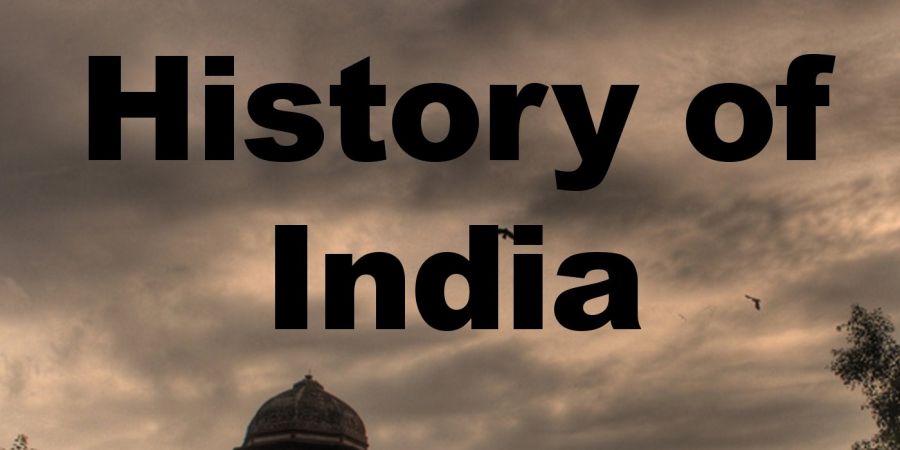

Modern genetics generally agrees that between 73,000 and 55,000 years ago, anatomically modern humans first arrived on the Indian subcontinent from Africa. [1] The earliest human remains discovered in South Asia, however, were from 30,000 years ago. Around 7000 BCE, settled life—which involves the shift from foraging to farming and pastoralism—started in South Asia. There is evidence of the domestication of wheat and barley at the Mehrgarh site, which was swiftly followed by the domestication of goats, sheep, and cattle. [2] By 4500 BCE, settled life had become more widespread[2] and had started to gradually develop into the Indus Valley civilisation, an early Old World civilization that coexisted alongside Mesopotamia and Ancient Egypt. Between 2500 and 1900 BCE, this civilization thrived in What is now Pakistan and northwest India was once known for its sophisticated drainage systems, Baked-brick homes, and reliable water supply.
The population of the Indus Valley dispersed to villages during the beginning of the second millennium BCE as a result of a protracted drought. At the same period, many waves of migration brought Indo-Aryan tribes from Central Asia into the Punjab. The Vedas, extensive collections of hymns written by these tribes, were a distinctive feature of their Vedic Period (1500–500 BCE). Their priests, warriors, and free peasants were arranged in a hierarchy under their varna system, which later gave rise to the caste system. From the Punjab, the pastoral and nomadic Indo-Aryans moved into the Gangetic plain, clearing enormous areas of forest for agricultural use. When a new, interregional culture emerged approximately 600 BCE, the creation of the Vedic writings came to an end.
A second urbanisation occurred as small chieftaincies, or janapadas, were combined into bigger states, or mahajanapadas. New ascetic movements like Jainism and Buddhism, which opposed the growing influence of Brahmanism and the primacy of rituals presided over by Brahmin priests that had come to be associated with Vedic religion[4], emerged alongside this urbanisation in Greater Magadha. These movements helped to give rise to new religious concepts. [5] Due to the success of these movements, Hinduism was created by combining Vedic Brahmanism with the pre-existing religious cultures of the subcontinent.
In the fourth and third centuries BCE, the Maurya Empire acquired the majority of the Indian subcontinent. Prakrit and Pali literature in the north and Tamil Sangam literature in the south began to flourish starting in the third century BCE. In the third century BCE, wootz steel was created in south India and exported. [8][9][10] After his General Pushyamitra Shunga killed the then-Emperor Brihadratha in 185 BCE, the Maurya Empire would fall. The Greco-Bactrian Kingdom claimed the northwest and founded the Indo-Greek Kingdom, while Shunga went on to build the Shunga Empire in the north and northeast of the subcontinent. During this Classical era, several regions of India were governed.
throughout the 4-6th centuries CE by a number of dynasties, including the Gupta Empire. It is referred to as the classical or "Golden Age of India" during this time because of the intellectual and religious revival of Hinduism. While kingdoms in southern India had marine trade connections with the Middle East and the Mediterranean throughout this time, elements of Indian civilisation, government, culture, and religion (Hinduism and Buddhism) were exported to most of Asia. Indian cultural influence expanded throughout most of Southeast Asia, resulting in the emergence of Indianized kingdoms in the region (Greater India).
The Tripartite Conflict between the Pala Empire, Rashtrakuta Empire, and Gurjara-Pratihara Empire, which lasted for more than two centuries and was centred on Kannauj, was the most important event between the 7th and 11th centuries. From the middle of the fifth century, several imperial kingdoms in southern India rose to prominence, with the Chalukya, Chola, Pallava, Chera, Pandyan, and Western Chalukya Empires being the most notable. Invading successfully into Sri Lanka, the Maldives, Bengal, and parts of Southeast Asia in the 11th century, the Chola dynasty also took control of southern India[13]. [14][15] Indian mathematics, notably Hindu numerals, had an impact on the growth of mathematics and astronomy in the Arab world in the early mediaeval period.


